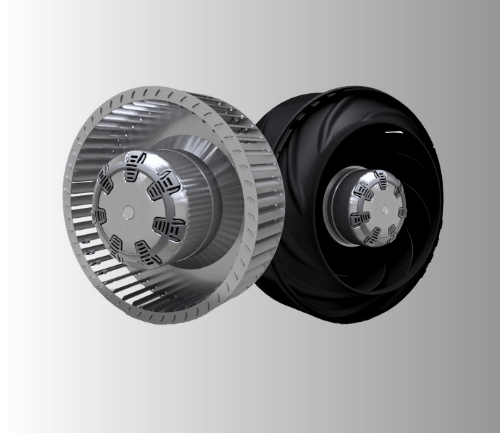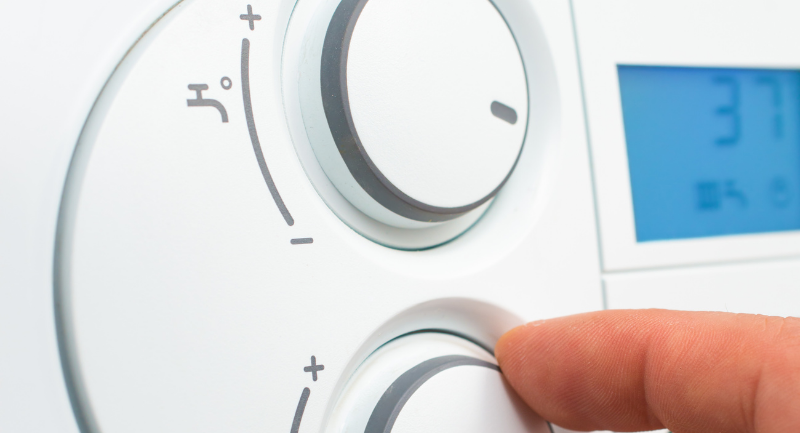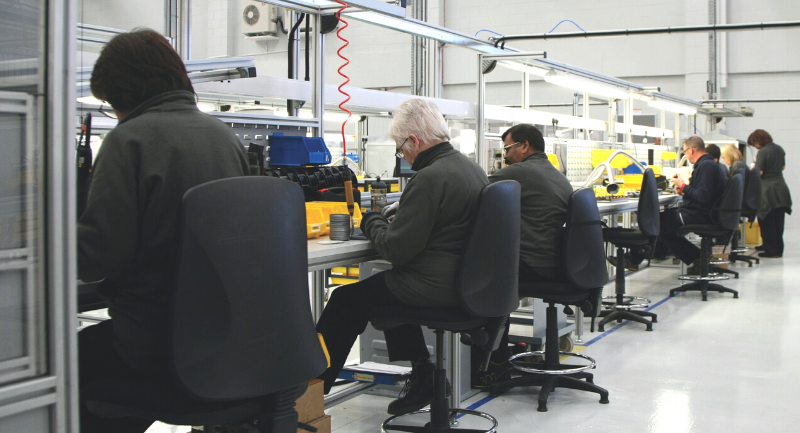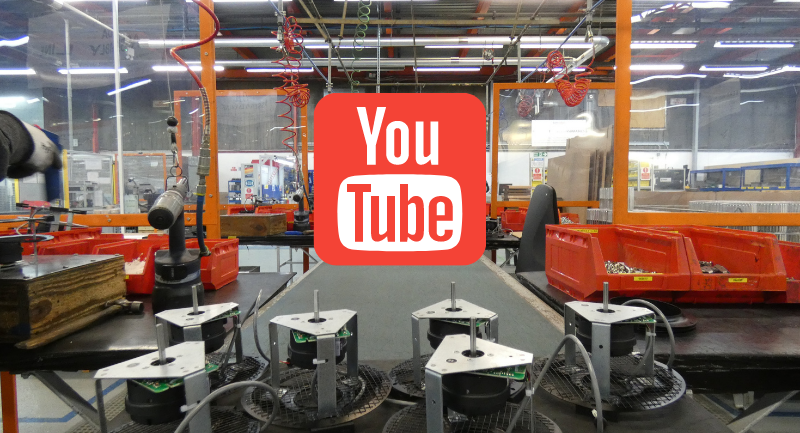The difference between a forward and backward curved fan is based on the rotation of the impeller. Depending on the application, one type may be better suited to it than the other. Here, we’ll explain how they work and what they can be used for.
What is a forward curved fan and how does it work?
A forward curved impeller is characterised by a relatively large number of shallow blades facing the direction of rotation.
For this type of impeller, flow from the impeller is produced in a tangential direction. The forward curve of the blade imparts kinetic energy to the air requiring a scroll housing to convert the kinetic energy into static pressure. For any given constant speed, the input power characteristic increases as flow increases from zero to maximum. At higher flow rates, care must therefore be taken that the load presented by the impeller does not exceed the rating of the driving motor.
What applications can a forward curved fan be used for?
Forward curved impellers are typically used to provide large air volumes at low running speeds in a compact installation. They are also suited for applications where constant airflow or constant pressure delivery is needed. Forward curved fans are used in a wide variety of applications including domestic boilers, warm air heaters, radiant heat tube heaters, refrigeration, heating fan coil assemblies and many more.
What is a backward curved fan and how does it work?
Backward curved impellers generally have a lower number of longer blades, facing away from the direction of rotation. The blades curve backwards from the inner edge to the outer edge, relative to the direction of rotation, and may be of plate or aerofoil form.
For this type of impeller, flow is produced in a radial direction because the impeller develops static pressure across the longer length of blade. On the front side of the blade a positive pressure is generated pushing the air outwards and on the reverse side of the blade a negative pressure is generated. This negative pressure draws air in to the space so that the front side of the following blade picks this air up and pushes it outwards. It can therefore be used with or without a scroll expansion housing, combining a fairly steep pressure characteristic over the normal working range with a power characteristic which does not overload the drive motor at higher flow rates.
What applications can a backward curved fan be used for?
Backward curved impellers are typically suited to higher efficiency, higher pressure applications where overall system efficiency is a key factor or where a scroll housing is not required.
Applications for backward curved fans include high pressure condensing (premix) boilers, extract ventilation systems, fume extraction systems, gas burner systems, heat recovery systems and many more.
The differences between backward and forward curved fans.
A forward curved impeller is mainly characterised by a higher number of shallow blades facing in the direction of rotation and can be a single air inlet variety or wider double inlet type. Backward curved impellers have a lower number of longer blades, generally facing away from the direction of rotation but can in some instances curve in both directions (often termed as backward curved – radially tipped).
Due to the pressure development mechanism, for any given flow rate a forward curved impeller generates the same pressure at approximately half the circumferential speed of a backward curved impeller. The forward curved impeller is therefore much quieter than the backward curved impeller and, due to the higher number of blades, gives a noise spectrum with much wider bandwidth and therefore lower energy in any part of the spectrum when compared to the backward curved impeller.
Due to the circumferential speed difference between the forward curved and backward curved impeller, the forward curved impeller will usually result in a more compact design, but it will require a scroll to generate static pressure.
Backward curved impellers require higher running speeds compared to forward curved impellers but, due to the pressure development mechanism, operate at higher efficiency. They are therefore particularly suited to being driven by high efficiency EC motors which are not tied to the lower running speeds of AC induction motors. This type of solution generally makes for the highest efficiency motor and impeller combination.
Torin-Sifan forward and backward curved fans
Torin-Sifan have been manufacturing forward and backward curved products since their inception. We not only provide ‘off the shelf’ impellers, but we also offer customised solutions. Options available can vary from plug type and mounting hole position to fully bespoke designs for specific applications. So whatever your requirement, we will try to accommodate your needs.




